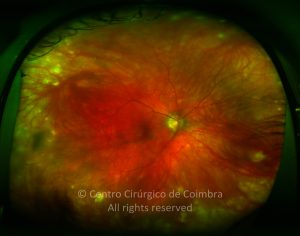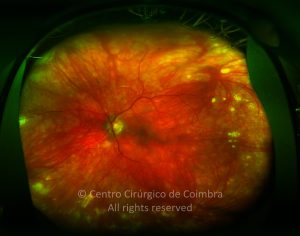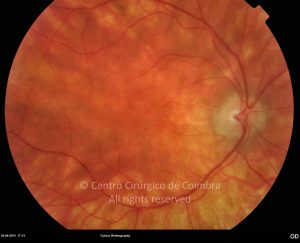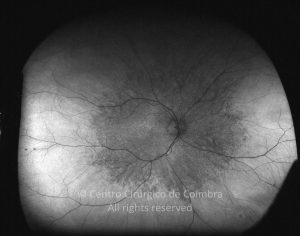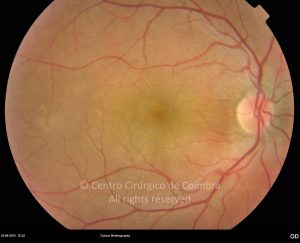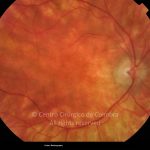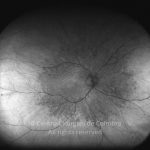Vogt-Koyanagi-Harada disease (VKH) currently is considered to be a cell-mediated autoimmune disease directed against melanocytes, that affects pigmented structures. Inflammation and loss of melanocytes have been described in a number of tissues, including the skin, inner ear, meninges, and uvea. In this inflammatory condition of autoimmune nature cytotoxic T cell target melanocytes in genetically susceptible individuals.
VKH is one of the most common causes of uveitis in orientals . Females are more commonly affected than males. The prodromal stage, preceding the acute uveitic stage by a few days, may mimic a viral infection. Cutaneous manifestations include alopecia, poliosis and vitiligo. Ocular early manifestations of VKH include panuveitis with diffuse choroiditis, which may include serous retinal detachment or focal areas of subretinal fluid. Patients present fluorescein angiographic abnormalities, including focal areas of delayed choroidal perfusion, multifocal pinpoint leakage, areas of placoid hyperfluorescence, pooling of subretinal fluid, and optic nerve staining. Late manifestations include ocular depigmentation and nummular chorioretinal scars, retinal pigment epithelium (RPE) clumping and migration.
Differential Diagnosis:
- Acute Posterior Multifocal Placoid Pigment Epitheliopathy
- Sarcoidosis
- Uveitic Glaucoma
- Lyme Disease
- Multifocal Choroidopathy Syndromes
- Papilledema
- Exudative Retinal Detachment
- Sudden Visual Loss





